Arlington, TX Pollen and Allergy Report for Summer 2023
Pollen Allergy Trends in Arlington, TX
When is pollen lowest in Arlington, TX?

February
Lowest month total PPM
Avg. PPM
When is pollen highest in Arlington, TX?

March
Highest month total PPM
Avg. PPM
How does pollen in Arlington, TX compare to Texas?
Arlington has a higher average PPM than the state of Texas.
Arlington yearly avg PPM:
Texas yearly avg PPM:
How does pollen in Arlington, TX compare to the USA?
Arlington has a higher average PPM than the USA.
Arlington yearly avg PPM:
USA yearly avg PPM:
Is pollen worse this year in Arlington, TX?
Spring 2023 was worse than spring 2022.
Spring 2023 PPM:
Spring 2022 PPM:
Average PPM in Arlington, TX

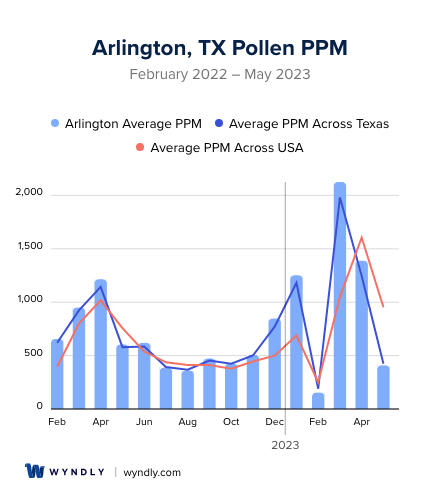
Arlington, TX Pollen and Allergy Breakdown by Month
Grass
When is grass pollen highest in Arlington, TX?
February has the highest grass pollen in Arlington, TX with an average PPM of
When is grass pollen lowest in Arlington, TX?
December has the lowest grass pollen in Arlington, TX with an average PPM of
Tree
When is tree pollen highest in Arlington, TX?
March has the highest tree pollen in Arlington, TX with an average PPM of
When is tree pollen lowest in Arlington, TX?
July has the lowest tree pollen in Arlington, TX with an average PPM of
Weed
When is weed pollen highest in Arlington, TX?
December has the highest weed pollen in Arlington, TX with an average PPM of
When is weed pollen lowest in Arlington, TX?
February has the lowest weed pollen in Arlington, TX with an average PPM of
Arlington, TX Pollen Monthly Breakdown by Pollen Type
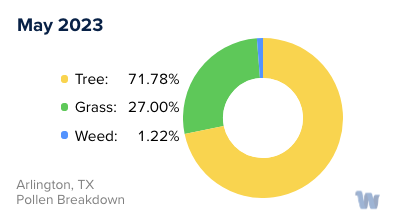
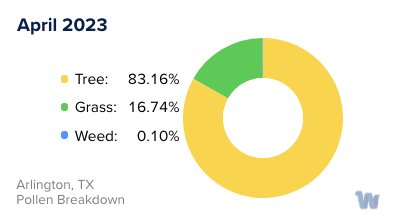



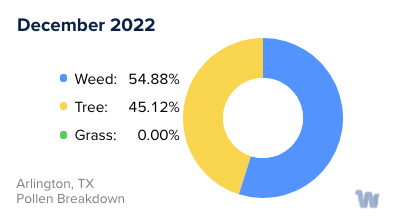
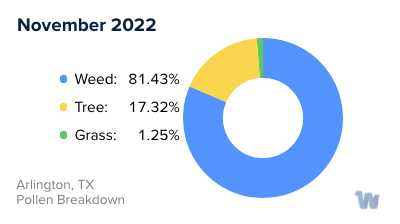
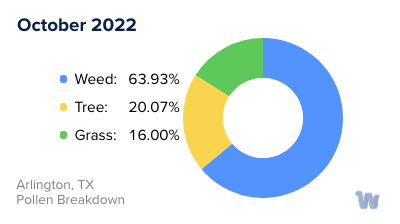
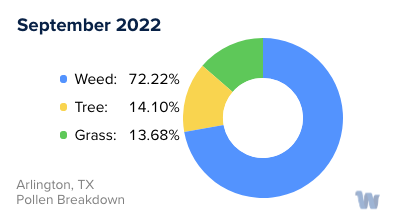

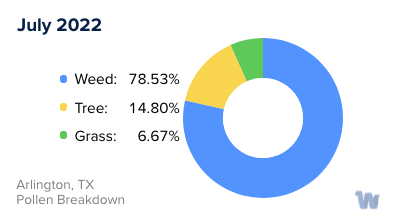

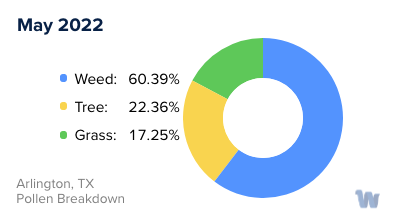
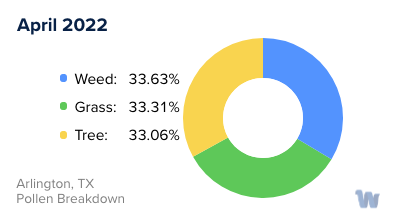
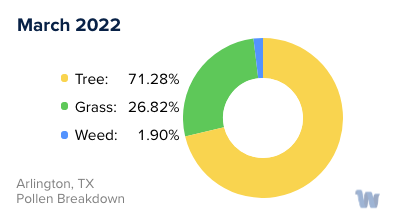
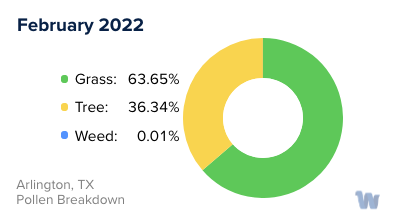
Pollen and Hay Fever in Arlington, TX
For residents of Arlington, Texas, pollen allergies and hay fever can seem like a near-constant battle, thanks to the diverse array of plants that bloom and release pollen throughout the year. Arlington's location within the pollen-rich state of Texas exposes residents to several types of pollen across different seasons, each with its unique set of symptoms.
From November to February, the mountain cedar takes center stage. This tree, abundant in Central Texas, produces small, light pollen grains that can travel hundreds of miles, making them hard to avoid. Exposure to mountain cedar pollen may result in symptoms like itchy, watery eyes, and a runny or stuffy nose.
As the mountain cedar season wraps up, the period from January to May ushers in a new set of allergens from elm, ash, and mulberry trees. The pollen from these trees can lead to sneezing, wheezing, and even asthma-like symptoms.
The spring months, from March to May, add another layer of complexity with the introduction of oak and pecan tree pollen. Additionally, grasses such as Bermuda, Johnson, and Kentucky bluegrass begin to release their pollen. Given the abundance of these grasses, this period can be particularly irritating for those sensitive to grass pollen, which can cause a runny nose, watery eyes, a sore throat, and asthma-like symptoms.
The summer months of June and July provide a brief respite as most plants stop producing pollen and pollen counts drop. However, this relief is short-lived as August brings the ragweed season, which continues until November. Ragweed, a common weed in the Americas, is particularly plentiful in the southwestern U.S. and releases pollen that can cause runny noses, sneezing, itchy eyes, and even asthma flares.
As the ragweed season tapers off in November, the cycle restarts with the re-emergence of mountain cedar. This relentless cycle of varying pollen types makes Arlington a challenging environment for those with pollen allergies and hay fever.


